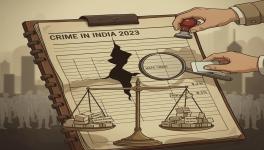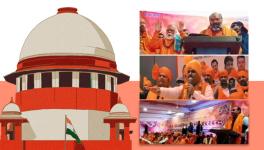The Hubris of Prophets Facing Backward – In Defense of the March for Science

Image Courtesy: Facebook
On 9th August, 2017, scientists took to the streets to march for science. They were demanding that the Government stop promoting unscientific and obscurantist ideas, stop throttling scientific research, and increase the funding allocated to education in general and science education in particular. In a note preceding these demands the protesting scientists also expressed anguish at the increasing incidence of communal violence, honour killings, mob lynching, and appealed for a renewed commitment to the idea of scientific temper as the bedrock of a modern and tolerant society. While there were obvious responses and dismissals from right wing commentators, there were also, not altogether unexpectedly, a few attacks from scholars who do not identify with the political conservatives. The articles by Prof. Sundar Sarukkai and Prof. Avijit Pathak stand out among these responses. In their articles, they dismiss the very idea of the march for science and label the protesters 'pampered', 'naive', ‘unscientific’, ‘reductionist’ and even ‘fundamentalist’.
Sarukkai and Pathak, get it utterly wrong on at least two basic counts. The first is the use of straw man arguments regarding the scientific method. For instance, one first characterises the practice of science as deterministic, reductionist and empirical, only to knock it over. Unfortunately, this definition is so very outdated, that what follows later is utterly irrelevant as a criticism of science. The practice and pedagogy of science (and not just the philosophy of science!) in the real world has progressed far beyond the naively positivist view, the origin of Sarukkai and Pathak’s caricatured view of science. The scientific method of today has been influenced by methods of inquiry used in many disciplines, not just the physics of 100 years ago. Practices and methods of study in the fields of biology, medicine and even the social sciences have influenced what would constitute the scientific method today. Indeed it would be a blinkered view of science that assumes that science has remained at the level of attempting to arrive at universal laws through experimentation and corroborating empirical evidence alone.
The second is the charge that scientists themselves are mostly upper caste, upper class, men, and by dint of this are complicit in the workings of an inequitable and unjust social and economic order. Such a charge dismisses completely the changes (inadequate, but non-trivial) that years of struggle have brought to both the natural and social sciences. It is important to remember that while largely it may still be true that a majority of those who have access to the Central Universities in this country, and more importantly, those who make it out of these Universities with their degrees, dignities, and lives intact continue to be men from the upper castes, if one looks closely at what constitutes the typical science or engineering lab of today, a slow but sure increase in the diversity can be observed.
There are more women today in the sciences than there were 70 years ago. The number of women enrolled in University Education in the science faculties has increased from 18.5% in 1971 to 39.8 in 2005, a jump of 113%. This increase looks even more impressive if compared with the figures for enrolment in the arts faculties for the same time period which show an increase of only 36% although in absolute terms the enrolment of women in the arts faculties has always been and continues to be higher. In the March for Science on 9th August, there were many women – engineers, scientists, teachers and research scholars.
Are there more Dalit and tribal students studying science today? Despite statutorily determined reservation, there is ample evidence to suggest that due to various barriers put up by Institutions inherently opposed to the idea of positive discrimination and affirmative action, the number of such students, even in publicly funded central institutions, falls well below the mandated proportion. However, students from Dalit and tribal communities are certainly not absent. While there have always been at least a few Dalit achievers in the IITs, they are more visible today and have started organising openly on questions of caste based discrimination and injustice. The Ambedkar Periyar Study Circle in IIT-Madras or the Ambedkar Periyar Phule Study Circle in IIT-Bombay are examples of this assertion by young Dalit scholars from science and tech departments. In the year that drew thousands of students to the streets protesting the death of Rohith Vemula, it is unfortunate indeed that scholars like Sarukkai and Pathak can be blind to the presence of Dalit scholars in the sciences and the profound inspiration they draw from icons like Carl Sagan in their endeavour to create a just world. While both authors cursorily acknowledge the promise of science and its appeal to those who want to create a progressive, secular and egalitarian society, they argue that science inherently is insufficient or even antithetical (for instance the charge of the marchers being “fundamentalist”) to these goals.
It is ironic that both Professors Sarukkai and Pathak resort to such utter reductionism when they accuse the protestors, especially of two things – i) Assuming direct causality between increased scientific temper in society and a reduction in mob lynching and honour killings and ii) devaluing other disciplines. Nowhere, either in their pamphlets or their letter, do those who marched on 9th August, claim that science education (and science education alone) will automatically lead to a more equal society. If the Professors had simply paid attention to who was actually marching that day and what they were saying, they would have realised that there is something extremely problematic about telling a group of young men and women that they do not understand the fight they are fighting and the society they belong to. After all, many of the same people were on the streets, fighting for justice for Rohith Vemula a little over a year ago. The one good thing that these two articles have done however is that they have exposed the close affinity (or striking resemblance) that post modern scholarship shares with the Hindutva project of obscurantism, pseudo-science, and the hatred of modernity.
Disclaimer: The views expressed here are the author's personal views, and do not necessarily represent the views of Newsclick.
Get the latest reports & analysis with people's perspective on Protests, movements & deep analytical videos, discussions of the current affairs in your Telegram app. Subscribe to NewsClick's Telegram channel & get Real-Time updates on stories, as they get published on our website.
























